Legends of the Water
North Carolina is host to a great variety of myths and legends as diverse as our landscape
BY Elyse Kiel, Illustrations by Will Jones
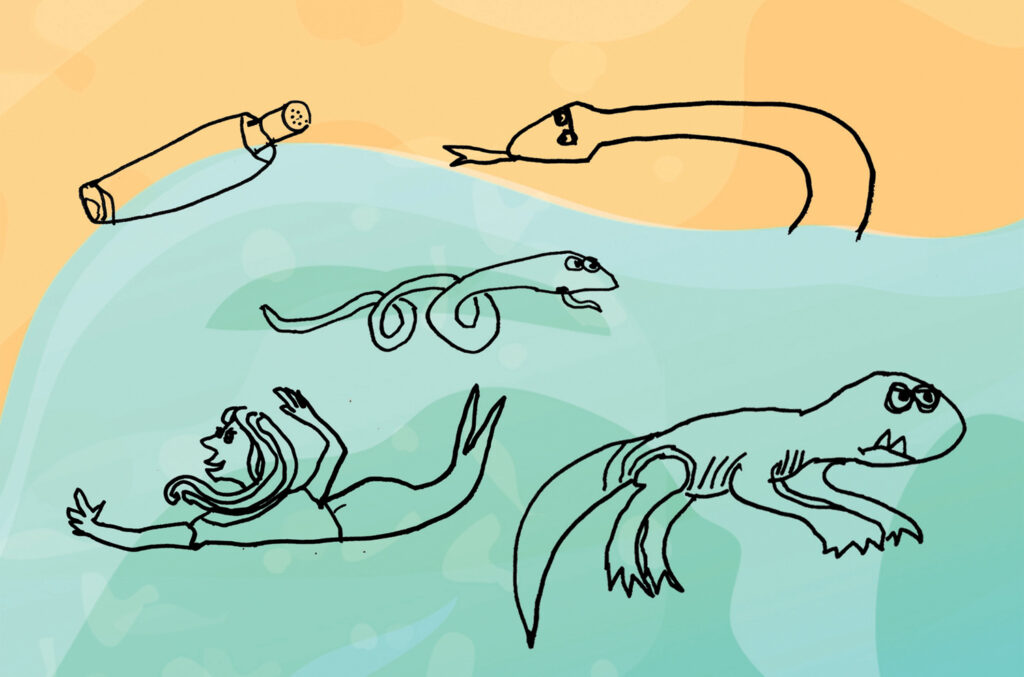
Lake Norman’s Normie
Lake Norman near Charlotte is a well-loved man-made lake constructed in the 1960s. Originally built by Duke Power as part of the Cowan Ford Dam to help with flooding, the lake is now a popular destination for thrill-seekers and getaway groups. However, there are tales of something lurking beneath those still waters.
It is the largest freshwater body in North Carolina at 34 miles long and more than 32,000 acres of water, but it can be shallow. The average depth is only about 30 feet.
Like Nessie, the Loch Ness Monster, in Scotland, Lake Norman has its own underwater creature, Normie.
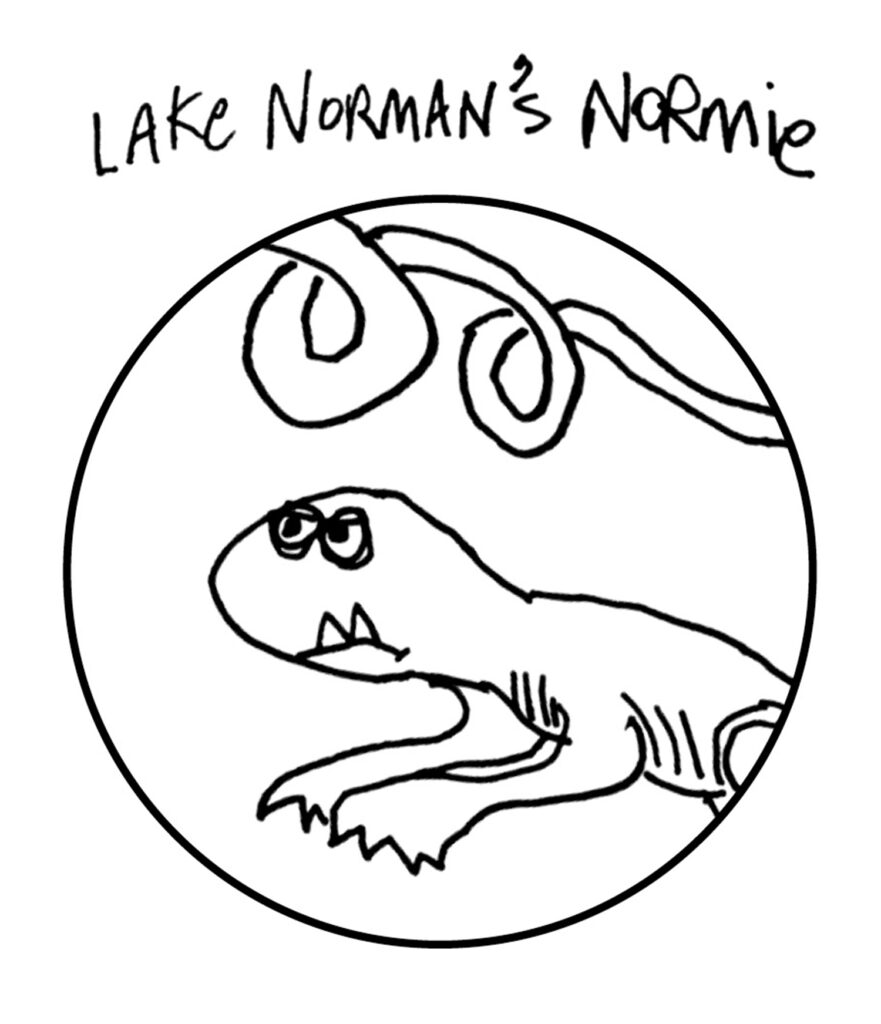
Normie isn’t as shy as his Scottish counterpart. There have been many sightings of a long, slimy creature chasing boats and harassing Jet Skiers. There is even a recorded attack on a scuba diver. The diver claims to have narrowly escaped a creature with red eyes that chomped at his fin and took it down to the murky bottom of the lake.
There are several theories as to what Normie is. Giant salamanders called hellbenders have been found in the lake, but at a maximum length of 2 feet, could this really be the monster that attacked that diver and bumps into water vehicles?
What about a gigantic catfish or alligator? Something that is well adapted to hiding and sneaking through the waters, is excellent at camouflage and a skilled hunter could fit the profile of the sightings.
Or perhaps it is a bowfin or sturgeon, both large fish that have slimy skin and scales that can take nips at divers’ fins.
Part of the reason Normie is widely believed to exist is because Lake Norman was created by the dam flooding a whole town. The town’s churches, houses, and stores remain intact at the bottom of the lake. One theory is that Normie is protecting the underwater town from further destruction.
Carroll A. Deering
Venturing to the Outer Banks in Dare County, there is a legend of a ghost ship that was found abandoned and run aground. None of the crew were ever found.

A five-mast schooner named Carroll A. Deering was making a return trip from Barbados to Virginia along the East Coast. On Jan. 29th, 1921, a lightkeeper from the Cape Lookout lightship saw the ship, crew and staff milling about on deck. A peculiar acting crewman told the lightkeeper the ship had lost its anchors.
Still, it sailed on. The next day, the ship was witnessed steering in odd directions near the Diamond Shoals lightship. On the morning of Jan. 31, the Deering was discovered by C.P. Brady of the Cape Hatteras Coast Guard station run aground against the shoals.
The navigation equipment, personal belongings, lifeboats, and anchors were missing, yet there was food set out as if a meal was about to be eaten. The ship was cleaned with its sails raised, ready to carry on with its journey at any moment, but there was no trace of the crew.
Months later in April, a note was found in a bottle washed ashore. It claimed that the ship was overwhelmed by pirates and the crew was taken away. After a federal investigation, the handwriting of the letter was found to match the man who found the letter, Christopher Columbus Gray. Without the vital information of the ship’s logs or navigation equipment, it is nearly impossible to tell what truly happened to the crew of the Deering.
Lockville Mermaid
The Cape Fear River has its own not-so-secret visitors. Where the Haw River and the Deep River meet to form the Cape Fear, there is a stretch of sandbar where people claimed to have seen mermaids.
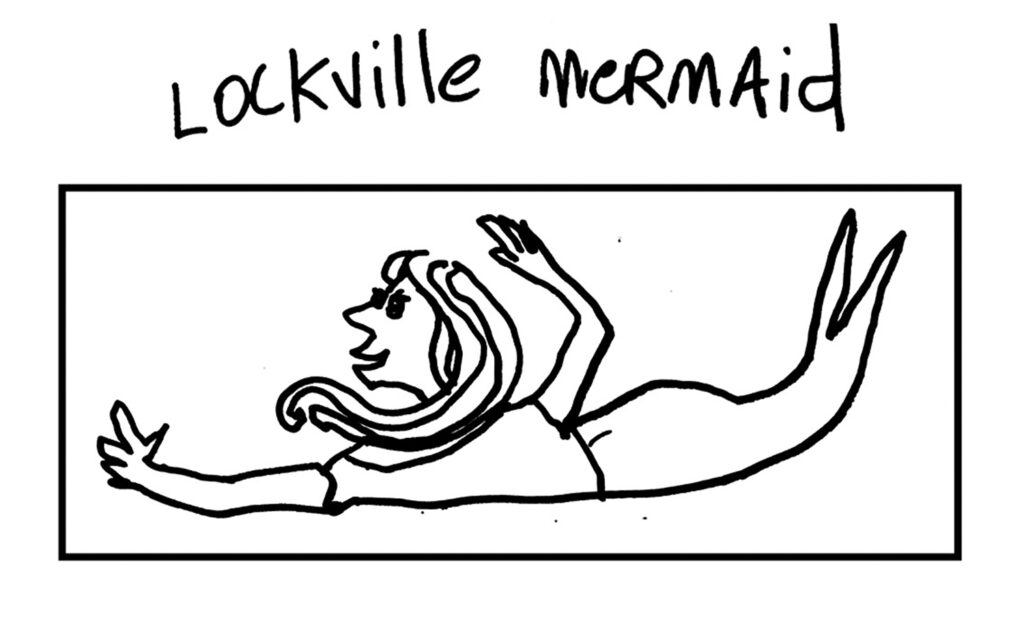
In the 18th century a man named Ambrose Ramsey opened a tavern along this area of the river in Lockville. It is said that Revolutionary War soldiers would leave the tavern at night and spot mermaids laying on the sandbar in the moonlight. The half-fish, half-human creatures could be seen singing, laughing, and splashing in the water late into the night. Whenever a soldier would call out to one, the mermaids would dive back below the surface.
It was believed the mermaids traveled up the river to rinse the saltwater from their hair, as they were often seen combing their hair, glossy and shining under the midnight moon. No one ever got close enough to truly know the intentions of the mermaids.
It remains a mystery as a flood destroyed the town in the 19th century, and the tales and sightings of mermaids were washed away.
Sea Serpent in Lower Cape Fear
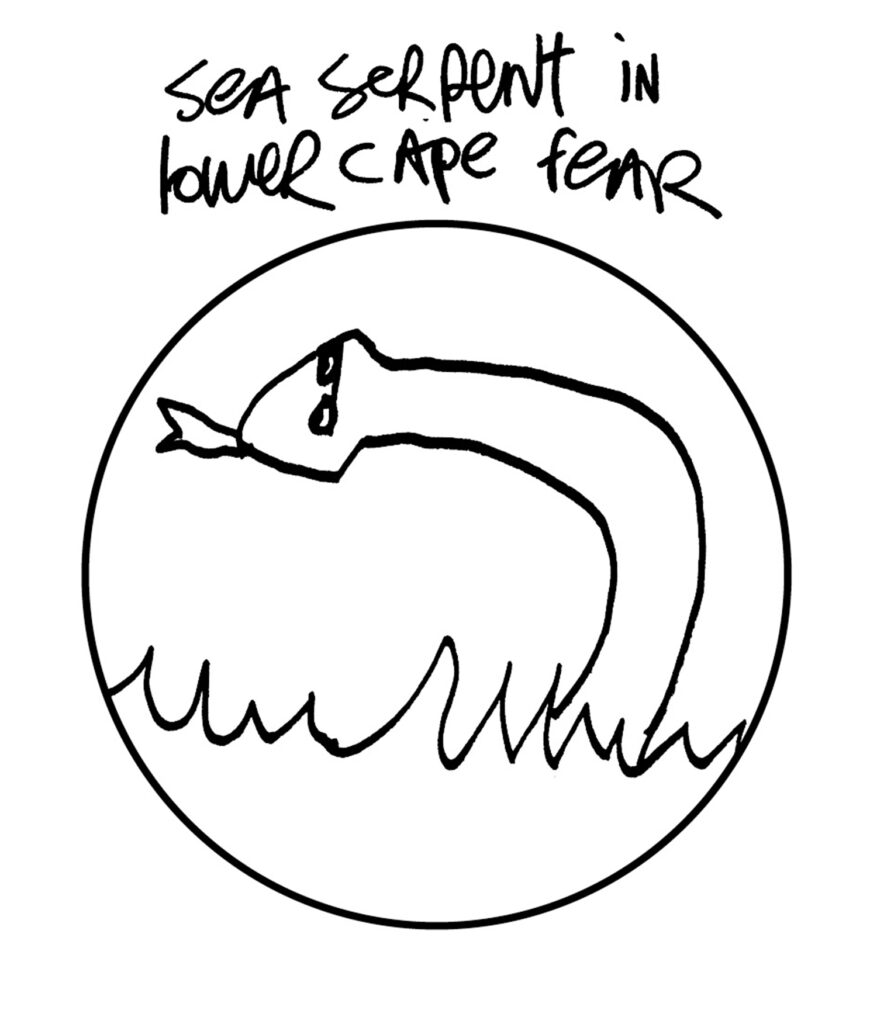
Another story is told about a sea serpent that terrorizes the waters of the Lower Cape Fear River. The creature was first noted by Native Americans, who recorded that a huge snake lived at the mouth of the Cape Fear River.
In 1524, Italian explorer Giovanni da Verrazano and his crew were venturing into the Cape Fear River when they spotted a huge, scaled snake resting among the waves. The salt water lapped over the bulging body of the cold-blooded creature, surely a frightening beast to witness when entering a new land.
In 1732, the Earl of Wilmington spotted a long, snake-like monster winding its way through the waves of the Cape Fear River outlet. Over a century later in 1865, Union soldier and naturalist James Calden reported sighting a 40-foot, gray-scaled behemoth snake that was 4 feet wide. The locals dubbed the monster Willie after the town.
In 1947, the Santa Clara III struck a sea monster. All three officers aboard the ship reported similar sightings of a long, thick, dark-colored body. Local historian Tabbot Cruthfield recorded several sightings in a folklore book and even set up an exhibit in the Wilmington Historical Museum about Willie.
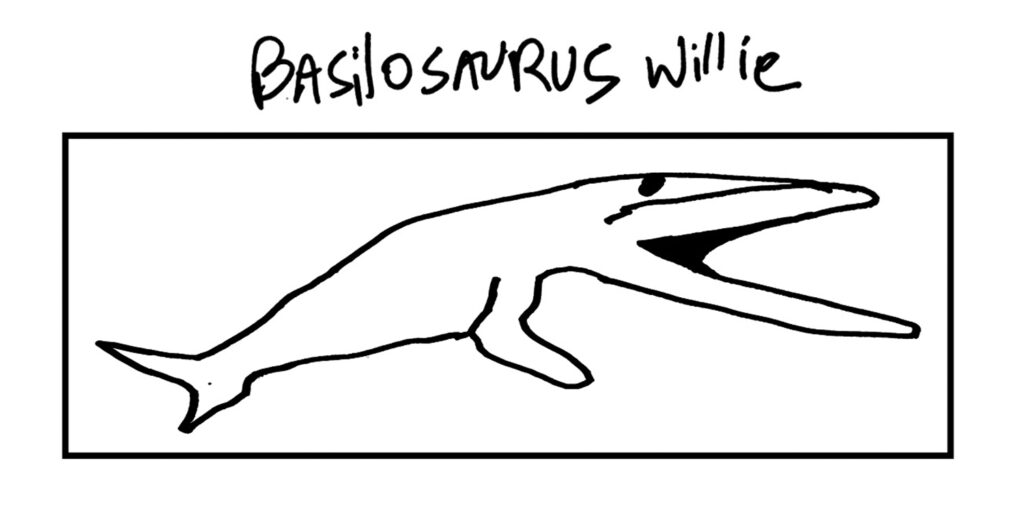
Sightings continued and were credible to the point that a paleontologist arrived in Wilmington, suggesting that people might be seeing a Basilosaurus, an ancient descendant of a whale that went extinct 34 million years ago.
Willie is said to still prowl in the brackish waters of the Cape Fear, spotted by locals curling up by the Battleship North Carolina and chasing groups of sharks along the coastline. This makes Willie one of the oldest cryptids in the history of North Carolina.
